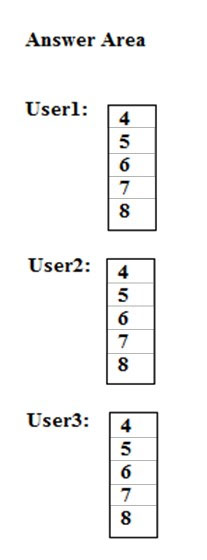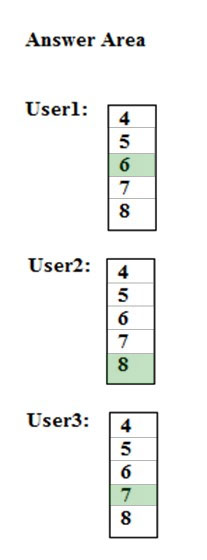

HOTSPOT -
Your network contains an Active Directory domain named contoso.com. The domain contains the objects shown in the following table.
Server1 has a local user named Admin1 and a local Group Policy that sets the minimum password length to four characters. The domain has the Group Policy objects (GPOs) shown in the following table.
What is the minimum password length for each user? To answer, select the appropriate options in the answer area.
NOTE: Each correct selection is worth one point.
Hot Area:

Mody
Highly Voted 5 years, 3 months agoDexvex
Highly Voted 4 years, 11 months agoGenjamBhai
4 years, 9 months agoLynaSophia
Most Recent 4 years, 3 months agoLovMi21
4 years, 3 months agoTrifon
4 years, 4 months agoDejvoch
4 years, 4 months agoAldrid
4 years, 4 months agoAldrid
4 years, 4 months agoelopez2207
4 years, 4 months agoKLOS
4 years, 5 months agoalexnt
4 years, 5 months agoherrdreyyer
4 years, 5 months agoRobbie
4 years, 5 months agohodg
4 years, 4 months agoStopper
4 years, 6 months agoalexnt
4 years, 6 months agoalexnt
4 years, 6 months agoVeiN
4 years, 7 months agoVeiN
4 years, 7 months agoKamikazekiller
4 years, 10 months agoProtomike
4 years, 10 months agolbs
4 years, 11 months agolbs
4 years, 10 months agove22
4 years, 10 months agohighfiveme
4 years, 7 months agoFNavarro
4 years, 5 months ago